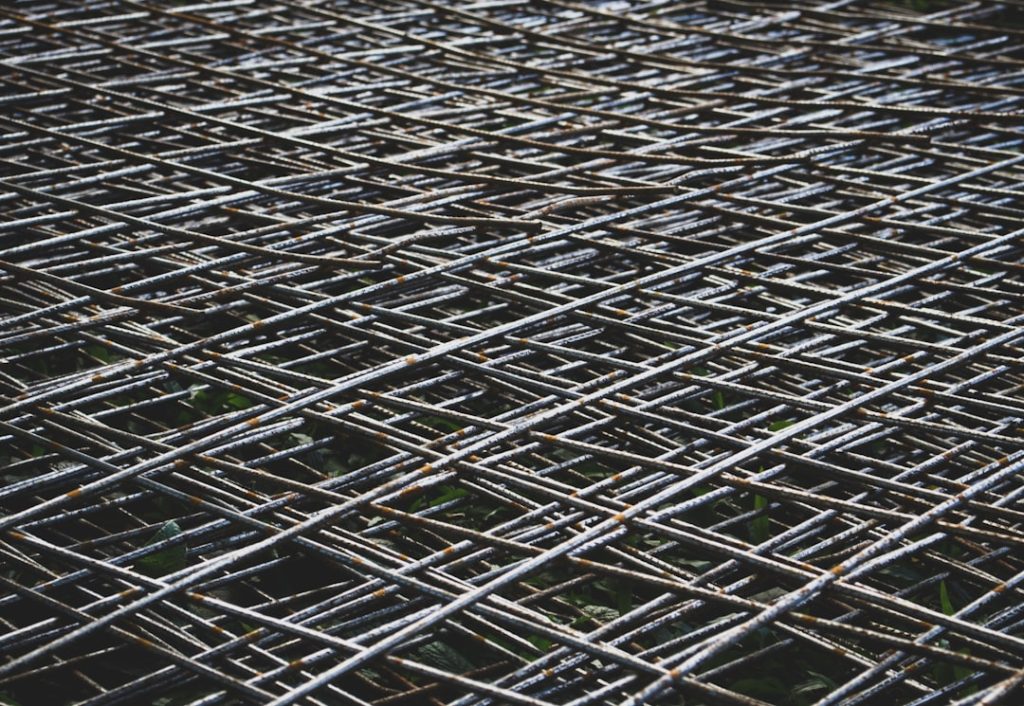Mongooses are small, agile, and highly intelligent predators that pose a significant threat to chicken coops and other small livestock. Their ability to dig and climb enables them to access vulnerable areas easily. As opportunistic feeders, mongooses will exploit any chance to hunt for food.
They are most active during the early morning and late afternoon, making these times particularly risky for chicken coops. Mongooses are highly adaptable and can quickly learn to overcome obstacles, making them a persistent threat to chicken safety. Mongooses are social animals that often work together in groups, increasing the challenge of deterring them from properties.
They possess a keen sense of smell and excellent vision, allowing them to easily detect potential food sources and predators. Understanding these behaviors is crucial in developing effective strategies to protect chicken coops from mongoose attacks.
Table of Contents
- 1 Securing the Chicken Coop: Reinforcing the Perimeter
- 2 Implementing Deterrents: Using Natural and Artificial Repellents
- 3 Creating Distractions: Providing Alternative Food Sources
- 4 Installing Motion-Activated Devices: Scaring Off Mongoose
- 5 Monitoring and Maintenance: Regularly Checking for Signs of Mongoose Activity
- 6 Seeking Professional Help: Consulting with Wildlife Experts
- 7 FAQs
- 7.1 What are some effective methods to keep mongoose away from chickens?
- 7.2 How can fencing help keep mongoose away from chickens?
- 7.3 What are some ways to secure chicken coops to keep mongoose away?
- 7.4 How can guard animals help keep mongoose away from chickens?
- 7.5 What types of traps can be used to keep mongoose away from chickens?
Key Takeaways
- Mongoose behavior includes digging, climbing, and squeezing through small spaces, making them a threat to chicken coops.
- Reinforce the perimeter of the chicken coop with sturdy fencing and secure any potential entry points to prevent mongoose intrusion.
- Use natural repellents like garlic and chili pepper, as well as artificial deterrents such as motion-activated sprinklers, to keep mongooses away from the coop.
- Provide alternative food sources away from the chicken coop to distract mongooses and reduce their interest in the area.
- Install motion-activated devices like lights and sound alarms to scare off mongooses and deter them from approaching the coop.
- Regularly check for signs of mongoose activity around the coop and make necessary repairs or adjustments to keep them out.
- Consult with wildlife experts for professional help in dealing with mongoose infestations and implementing effective long-term solutions.
Securing the Chicken Coop: Reinforcing the Perimeter
Inspect and Secure the Perimeter
To safeguard your chicken coop from mongoose attacks, it is crucial to reinforce the perimeter and make it as difficult as possible for them to gain access. Start by inspecting the entire perimeter of the coop for any potential entry points, such as gaps in fencing, holes in the ground, or weak spots in the structure. Use heavy-duty wire mesh to cover any openings and secure it with strong fasteners to prevent mongoose from digging or chewing their way through.
Prevent Digging with an Apron of Wire Mesh
In addition to securing the physical perimeter, consider installing an apron of wire mesh around the base of the coop to prevent mongoose from digging underneath. This should extend at least 12 inches outward and be buried at least 6 inches deep to effectively deter digging.
Secure Doors and Windows
It is also important to ensure that all doors and windows are securely closed and latched at all times, as mongoose are known for their ability to manipulate simple latches and locks.
Reduce the Risk of Mongoose Attacks
By reinforcing the perimeter of the chicken coop, you can significantly reduce the risk of mongoose attacks and keep your chickens safe.
Implementing Deterrents: Using Natural and Artificial Repellents
In addition to securing the physical perimeter of the chicken coop, implementing deterrents can help discourage mongoose from approaching the area. Natural repellents such as predator urine or predator scent can be effective in deterring mongoose, as they will perceive the area as being occupied by a potential threat. These can be applied around the perimeter of the coop or near potential entry points to create a barrier that mongoose will be reluctant to cross.
Artificial repellents such as motion-activated sprinklers or ultrasonic devices can also be effective in deterring mongoose from approaching the chicken coop. These devices emit a sudden burst of water or high-frequency sound when triggered by motion, startling and scaring off any potential threats. Place these devices strategically around the perimeter of the coop to create a zone of protection that will deter mongoose from getting too close.
By using a combination of natural and artificial repellents, you can create an effective deterrent system that will help keep mongoose at bay and protect your chickens from harm.
Creating Distractions: Providing Alternative Food Sources
One effective strategy for deterring mongoose from targeting your chicken coop is to provide alternative food sources that will divert their attention away from your livestock. Mongoose are opportunistic feeders and will seek out easy sources of food, so by providing them with an alternative, you can reduce the likelihood of them targeting your chickens. Consider setting up feeding stations with food that is attractive to mongoose, such as fruits or eggs, at a distance from the chicken coop.
This will give them a readily available food source that will hopefully satisfy their hunger without them needing to approach the coop. Another option is to plant fruit trees or bushes that produce fruits that are appealing to mongoose in an area away from the coop. By providing these alternative food sources, you can help reduce the pressure on your chicken coop and minimize the risk of mongoose attacks.
It is important to regularly monitor these feeding stations and alternative food sources to ensure that they are effective in diverting mongoose away from your chickens.
Installing Motion-Activated Devices: Scaring Off Mongoose
Motion-activated devices can be highly effective in scaring off mongoose and preventing them from approaching the chicken coop. These devices are designed to detect movement within a certain range and then emit a sudden burst of sound, light, or water to startle and deter potential threats. By installing motion-activated lights or sound emitters around the perimeter of the coop, you can create a zone of protection that will deter mongoose from getting too close.
Another option is to install motion-activated sprinklers that will release a sudden burst of water when triggered by movement. This can be particularly effective in deterring mongoose, as they are known to be wary of water and will quickly retreat when sprayed. By strategically placing these devices around the perimeter of the coop, you can create a strong deterrent system that will help keep mongoose at bay and protect your chickens from harm.
Monitoring and Maintenance: Regularly Checking for Signs of Mongoose Activity

Identifying Mongoose Activity
It is essential to regularly inspect the perimeter of the coop for any signs of mongoose activity, such as tracks, droppings, or digging. By identifying these signs early on, you can take proactive measures to reinforce the perimeter and implement deterrents before any damage occurs.
Maintenance of Deterrents
In addition to regular inspections, it is important to maintain any deterrents or repellents that have been put in place. Check motion-activated devices regularly to ensure they are functioning properly and replace batteries as needed. Refresh natural repellents such as predator scent or urine regularly to maintain their effectiveness.
Staying Vigilant
By staying vigilant and proactive in monitoring and maintaining your deterrent system, you can effectively protect your chicken coop from mongoose attacks.
Seeking Professional Help: Consulting with Wildlife Experts
If you are facing persistent issues with mongoose attacks on your chicken coop, it may be necessary to seek professional help from wildlife experts. These professionals have the knowledge and experience to assess the situation and provide effective solutions for deterring mongoose from your property. They can offer valuable insights into mongoose behavior and provide recommendations for implementing deterrents that are tailored to your specific situation.
Wildlife experts can also provide guidance on humane trapping and relocation methods if necessary. In some cases, trapping and relocating problem mongoose may be the most effective solution for protecting your chickens. By consulting with wildlife experts, you can gain access to valuable resources and expertise that will help you effectively address the threat of mongoose attacks on your chicken coop.
In conclusion, protecting your chicken coop from mongoose attacks requires a multi-faceted approach that includes understanding mongoose behavior, securing the perimeter, implementing deterrents, providing alternative food sources, installing motion-activated devices, monitoring for signs of activity, and seeking professional help when needed. By taking proactive measures and staying vigilant, you can effectively protect your chickens from this persistent threat and ensure their safety and well-being.
If you’re looking for ways to keep mongoose away from your chickens, you may also be interested in learning about how to properly secure your chicken coop. Check out this article on chicken coop portage for tips on keeping your chickens safe from predators.
FAQs
What are some effective methods to keep mongoose away from chickens?
Some effective methods to keep mongoose away from chickens include using fencing, securing chicken coops, using guard animals, and setting up traps.
How can fencing help keep mongoose away from chickens?
Fencing can help keep mongoose away from chickens by creating a physical barrier that prevents them from accessing the chicken coop and the chickens.
What are some ways to secure chicken coops to keep mongoose away?
Securing chicken coops can involve using strong and durable materials for construction, ensuring that there are no gaps or openings that mongoose can squeeze through, and installing secure locks on doors and windows.
How can guard animals help keep mongoose away from chickens?
Guard animals such as dogs or geese can help keep mongoose away from chickens by patrolling the area and deterring potential predators.
What types of traps can be used to keep mongoose away from chickens?
Traps such as live traps or lethal traps can be used to catch and remove mongoose from the area where chickens are kept. It is important to check local regulations and use traps responsibly.
Meet Walter, the feathered-friend fanatic of Florida! Nestled in the sunshine state, Walter struts through life with his feathered companions, clucking his way to happiness. With a coop that’s fancier than a five-star hotel, he’s the Don Juan of the chicken world. When he’s not teaching his hens to do the cha-cha, you’ll find him in a heated debate with his prized rooster, Sir Clucks-a-Lot. Walter’s poultry passion is no yolk; he’s the sunny-side-up guy you never knew you needed in your flock of friends!







